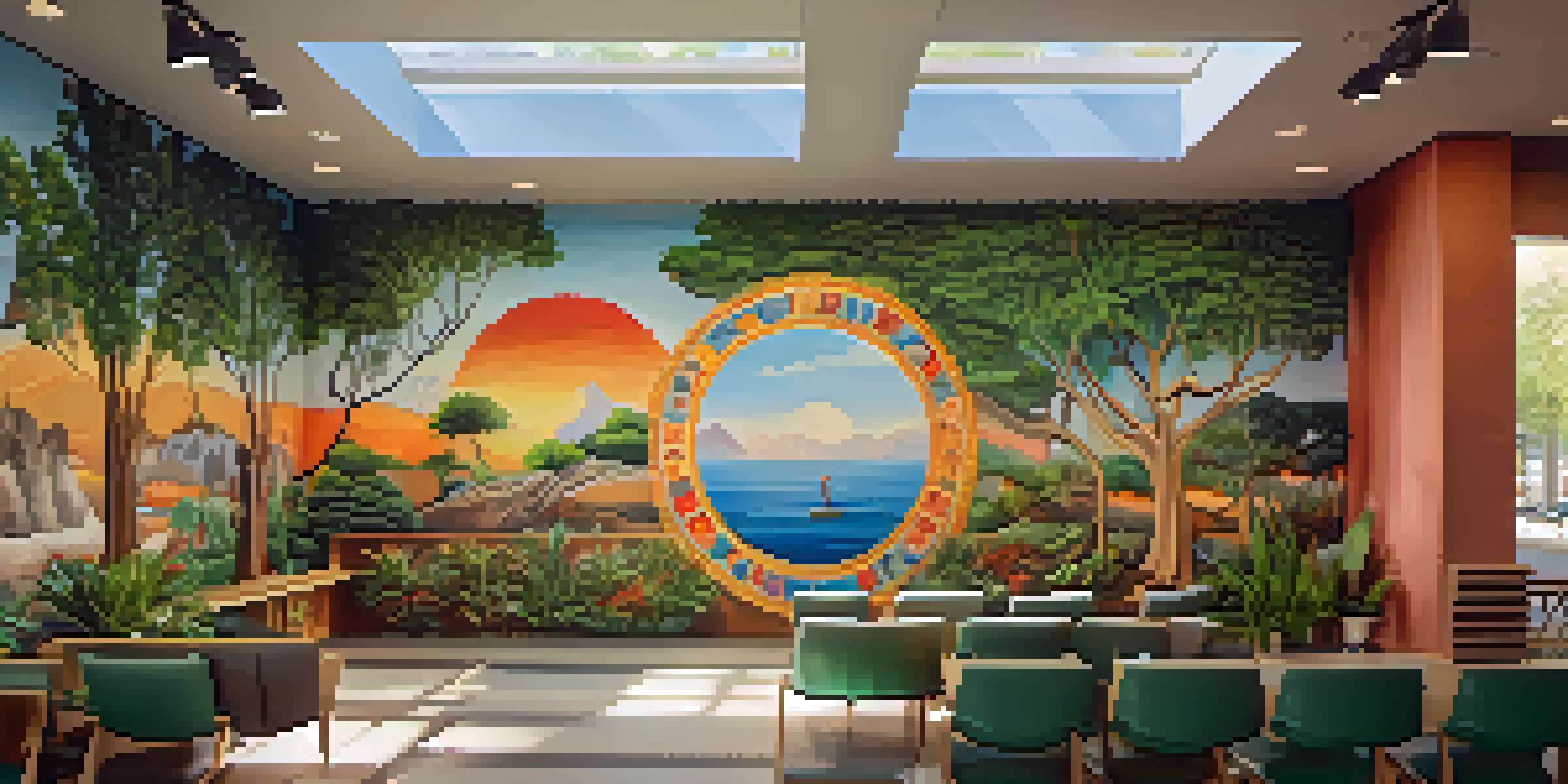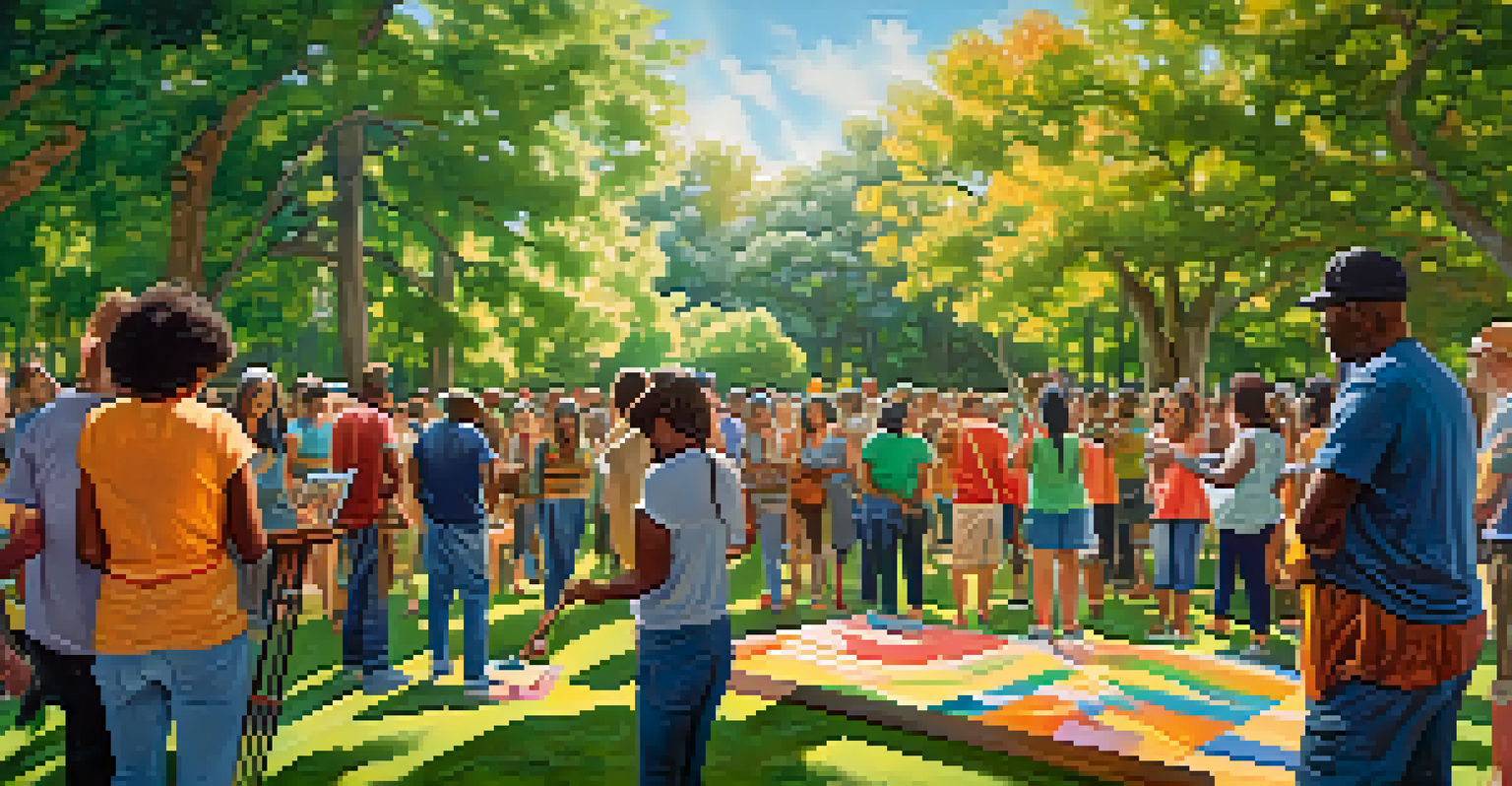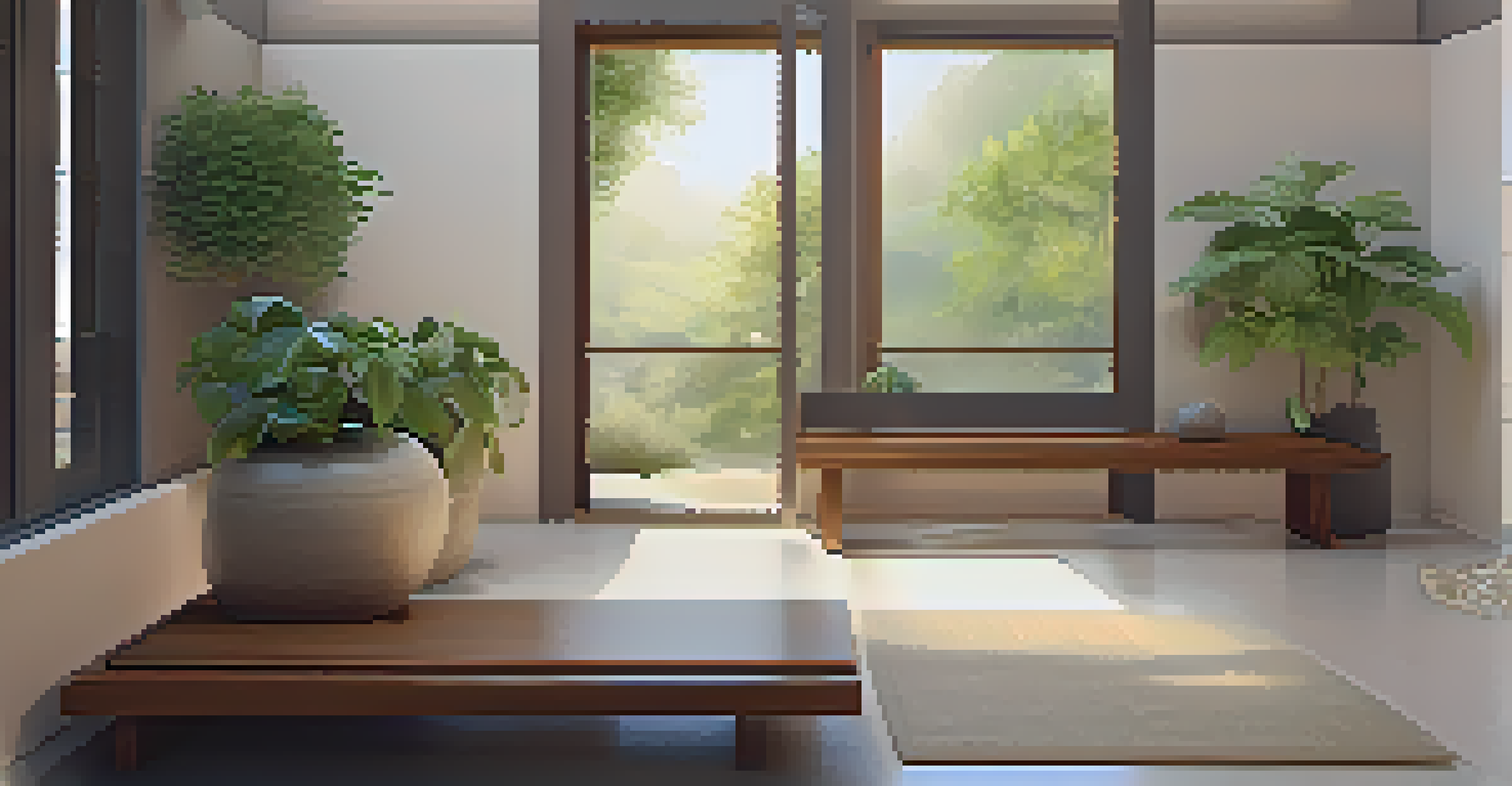Cultural Sensitivity in Art for Healing Spaces

Understanding Cultural Sensitivity in Art
Cultural sensitivity is about recognizing and respecting the diverse cultures around us. In the context of art, it means being aware of the cultural backgrounds of both the artists and the audience. This understanding helps create a healing environment where everyone feels valued and included.
Art is a universal language that speaks to the heart and soul, transcending cultural boundaries.
For instance, using symbols or motifs from a particular culture can evoke powerful emotions. However, if these elements are misrepresented or used without understanding, it can lead to cultural appropriation, which is damaging. This highlights the importance of educating oneself about different cultural expressions in art.
Art for healing spaces should aim to promote inclusivity, allowing various voices to be heard. By prioritizing cultural sensitivity, we can create art that not only heals but also fosters a sense of belonging for individuals from different backgrounds.
The Role of Artists in Healing Spaces
Artists play a crucial role in shaping the environment of healing spaces. Their work can influence how individuals perceive and interact with the space. When artists are culturally informed, they can create pieces that resonate deeply with the community they serve.

Consider a mural in a hospital that reflects the local culture; it can uplift spirits and provide comfort. Conversely, a piece that does not consider the community's values might alienate patients and visitors. This illustrates the need for artists to engage with the communities they represent.
Cultural Sensitivity in Art Matters
Understanding cultural backgrounds is essential to create art that respects and includes diverse communities.
Moreover, collaborating with cultural consultants can enhance the authenticity of the artwork. By doing so, artists ensure that their creations honor the traditions and stories of the culture involved, making the healing process more meaningful.
Choosing Art with Cultural Awareness
When selecting art for healing spaces, it's essential to consider the cultural context of the pieces. This means evaluating not just the visual appeal but also the message and background of the artworks. Thoughtful curation can significantly affect the atmosphere of a space.
Diversity is the art of thinking independently together.
For example, incorporating local artists or culturally significant themes can create a sense of pride and ownership among community members. This connection can enhance the therapeutic effects of the space, making it feel more welcoming and relatable.
Additionally, providing descriptions or stories behind the art can enhance understanding and appreciation. It invites viewers to engage with the artwork on a deeper level, fostering a dialogue about cultural diversity and healing.
Art as a Medium for Cultural Expression
Art serves as a powerful medium for cultural expression, allowing individuals to share their stories and experiences. This is especially important in healing spaces where personal narratives can help foster empathy and understanding. By showcasing diverse artistic expressions, healing environments can reflect the rich tapestry of human experience.
For instance, indigenous art often carries profound meanings tied to tradition and identity. Displaying such works in healing spaces can educate others about these cultures while honoring their significance. This not only enhances the environment but also creates opportunities for learning and growth.
Artists Shape Healing Environments
Culturally informed artists can create meaningful artwork that resonates with and supports the healing journey of communities.
Furthermore, engaging community members in creating art can strengthen cultural bonds. Collaborative art projects can serve as healing exercises, allowing participants to connect with their heritage and each other, ultimately enriching the healing experience.
Creating a Safe Space for All Cultures
Healing spaces should be designed to be safe and welcoming for individuals from all cultural backgrounds. This involves not just physical aspects but also emotional and psychological factors. A culturally sensitive space acknowledges the diverse needs and experiences of its users.
Incorporating elements like quiet reflection areas or culturally relevant resources can help individuals feel at ease. It’s essential to ensure that everyone feels represented and respected within the space, which can significantly impact their healing journey.
Moreover, staff training on cultural sensitivity can enhance the overall experience. When everyone involved in the healing process understands and values cultural differences, it fosters an environment of mutual respect and understanding.
Challenges in Achieving Cultural Sensitivity
While the importance of cultural sensitivity in art for healing spaces is clear, challenges do exist. One major obstacle is the lack of awareness or knowledge about different cultures among artists and curators. This gap can lead to unintentional biases or misrepresentations in the artwork.
Additionally, there can be resistance to change within organizations that traditionally follow a specific aesthetic or cultural narrative. Overcoming this inertia requires open dialogue and a commitment to inclusivity, which can take time and effort.
Collaborative Art Enhances Healing
Engaging community members in the creation of art fosters connections and strengthens cultural bonds in healing spaces.
To address these challenges, continuous education and community engagement are vital. By fostering an environment that encourages learning and understanding, healing spaces can evolve to become more culturally sensitive and inclusive.
The Future of Culturally Sensitive Art in Healing Spaces
Looking ahead, the future of art in healing spaces seems promising with a growing emphasis on cultural sensitivity. As awareness increases, more organizations are recognizing the importance of inclusive art that reflects the diversity of the communities they serve. This shift can lead to more meaningful and impactful healing environments.
Innovative collaborations between artists, healthcare providers, and community members are emerging. These partnerships can result in unique art initiatives that not only beautify spaces but also tell the stories of the people they serve. Such projects can enhance community ties and promote cultural understanding.

Ultimately, prioritizing cultural sensitivity in art for healing spaces can transform the way we perceive and experience healing. By embracing diversity, we can create environments that truly support the well-being of all individuals.